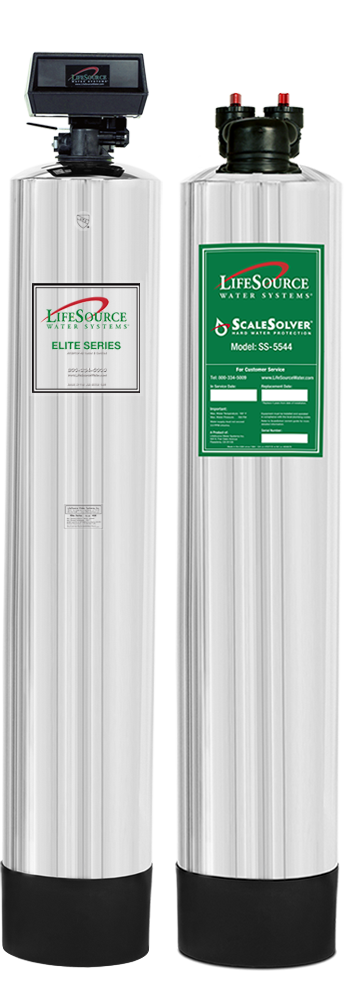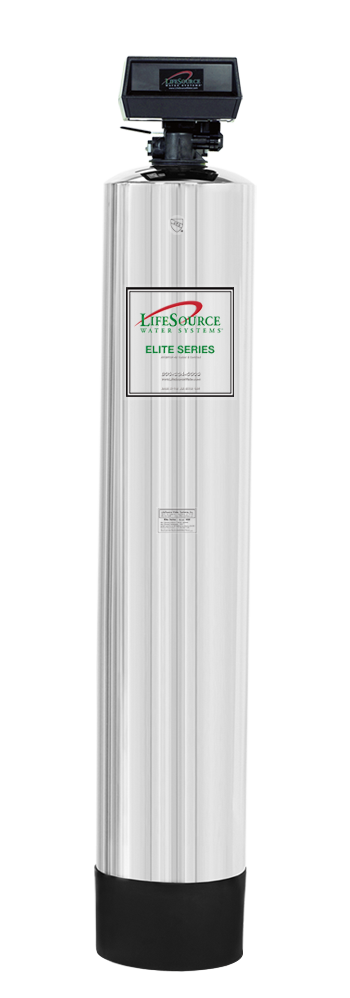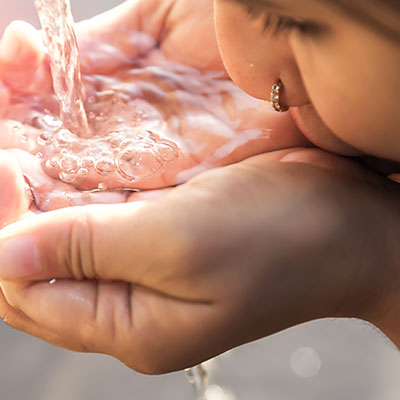
PFAS: The Invisible Chemicals In Your Water
Quick Answer: What are PFAS
A recent Water Quality Association (WQA) report noted that per- and polyfluorinated alkyl substances (PFAS) are ranked lowest on the awareness scale of contaminants, with chlorine ranking the highest and PFAS the lowest. This family of manufactured chemicals has no taste or smell and is too small to be perceived by the human eye.

PFAS constitute over 12,000 synthetic chemicals designed to linger ‘forever’ in nature and build up in our blood and organs. These chemicals are omnipresent in everyday items, from nonstick cookware to fast-food packaging and firefighting foam.
So PFAS Not Naturally Occurring?
Correct. PFAS are man-made and originate from highly toxic fluorinated chemicals generated by industrial practices and commercially made products. Today, PFAS are detectable in the bloodstream of nearly all Americans, including newborns.

Where Are PFAS Found?
Drinking Water
Household Products – cleaning products, nonstick cookware
Water-Resistant Fabrics – rain jackets, umbrellas and tents
Food Packaging – Grease-resistant paper, fast food containers/wrappers, microwave popcorn bags, pizza boxes, and candy wrappers
Fire-Extinguishing Foam
Personal Care Products – shampoo, dental floss, nail polish, and eye makeup
Stain-Resistant Coatings – used on carpets, upholstery, other fabrics, paints, and varnishes
PFAS can also be found in soil or water near waste sites such as disposal sites and landfills. Manufacturing and chemical production facilities are also breeding grounds for PFAS.

Where Did PFAS Come From?
In short, from plastic. The long story is that in 1946, the company DuPont launched nonstick cookware coated with Teflon. This product launched a family of fluorinated compounds, known as PFAS.
As the allure of PFAS grew, so did their pervasive presence in consumer goods and industrial applications. Decades of widespread use led to the contamination of PFAS into water, soil, and even the bloodstream of people and animals worldwide. PFAS, the seemingly indestructible chemicals, defy breakdown both in the environment and within our bodies, leaving a lasting imprint for years to come.
Since the birth of PFAS, numerous discoveries of the chemicals have been found in drinking water near commercial plants. Studies also have linked the Teflon chemical to cancer and other diseases, though more research needs to be conducted for further clarity.
Are Microplastics and PFAS The Same Thing?
While some microplastics are made of PFAS, some PFAS break down into microplastics.

Additionally, everyday items like synthetic clothes can be coated in PFAS and eventually break down into these tiny microplastics. Think of PFAS and microplastics as cousins, with shared characteristics that scientists are still figuring out.
These tiny plastic bits, known as microplastics, like PFAS, are everywhere. Microplastics exist in salt, beer, fruits, vegetables, and even water. They can also travel in the air globally, falling back to Earth like rain. This widespread presence raises concerns about how they might affect our health.
Microplastics can act like sponges, soaking up various chemicals that could harm our body's hormonal balance. Lab tests show that they can cause problems in human cells, leading to allergic reactions and even cell death. However, we don't yet have substantial studies showing a direct link between exposure to these tiny plastics and pervasive health problems in many people.
Why Are PFAS Dangerous?
High concentrations of certain PFAS may pose health risks, including but not limited to:
-
Abnormal kidney function
-
Metabolic syndrome
-
Thyroid regulation
-
Testicular, kidney, liver and pancreatic cancer
-
Endocrine disruption
-
Reproductive issues
-
High cholesterol

Children Are Highly Susceptible to PFAS
Children can be exposed to PFAS even before they're born, either in utero or through breastfeeding. Baby formula mixed with PFAS-contaminated water can also expose infants to these dangerous chemicals. Children have weaker natural defense systems, leaving their brains, porous skin, still-developing digestive systems, metabolic pathways, and vital organs more vulnerable to issues.
The Widespread Issue
A US Geological Survey study estimates that nearly half of U.S. tap water contains at least one monitored type of PFAS.
As of November 2023, 4,621 locations in 50 states, the District of Columbia and two territories are known to be contaminated.
Urban areas and potential PFAS sources, such as the Great Plains and Great Lakes, show higher exposure probabilities, making this a concern cutting across different regions.
Here is an updated map of PFAS contamination in the U.S.: click here.

Household Water Sources
In the U.S., three primary sources provide drinking water:
Public Supply (87% of the population): Regulated and monitored by the EPA.
Private Supply (13% of the population): Primarily private wells, generally unregulated.
Commercial Packaged (bottled) Supply: FDA-regulated as food.
Testing Your Water for PFAs
Testing for PFAS exposure can be done through a blood test, offering insight into exposure levels. However, it cannot precisely quantify exposure or predict health effects. In-home treatment technologies, such as carbon water filtration and reverse osmosis, effectively reduce PFAS levels in drinking water.

Can I Filter PFAS Out of My Drinking Water?
According to the U.S. Environmental Protection Agency, three treatment methods have been identified as effective for removing PFAS: granular activated carbon, ion exchange resins, and high-pressure membrane systems.
Not all water filters efficiently eliminate PFAS. Look for filter systems that have been independently tested and certified by a third party, like the National Science Foundation (NSF).
Most filter systems require regular maintenance to be effective and safe. This includes replacing filters and scheduling service visits. Consider these ongoing costs when selecting a filter. LifeSource Whole House Water Systems require ZERO REGULAR MAINTENANCE. They filter water 24/7 from every tap, faucet and shower without needing any filter changes or monthly servicing.

How Can I Reduce My Exposure?
- Minimize consumption of water and food that contain PFAS.
- Install filters to remove PFAS from your water.
- Follow local fish advisories.
- Reduce use of products that contain PFAS.
- Vacuum your home regularly to eliminate dust and soil that may contain PFAS. High-efficiency particulate air (HEPA) filters also reduce the amount of dirt and dust in your home.
Additionally, follow any drinking water advisories issued by your water system or local government.
If your drinking water exceeds EPA or state-specified PFAS levels, use an alternative water source for all activities involving water ingestion.
What Is Being Done: The Unchecked Spread of PFAS
There are thousands of public drinking-water systems across the country not being tested regularly for PFAS and no nationwide tracking system dedicated to tracking the proliferation of forever chemicals.
Learn about the EPA’s current efforts to address PFAS: Click Here.
FAQ
Do Handheld Pitcher Filters Remove PFAS?
Typical water pitchers are not designed to eliminate PFAS or decrease their levels in tap water.
Can I boil my water to get rid of PFAS?
No, you cannot boil PFAS out of water.
Does bottled water contain PFAS?
Yes, some brands of bottled water have been found to contain PFAS. If you opt for bottled water as an alternative, choose brands that have undergone purification through water filtration.
Can PFAS be absorbed through the skin?
Based on current data, your skin can absorb only a minimal amount of PFAS if your water is contaminated with those chemicals. Additionally, most PFAS don't easily evaporate into the air from water, meaning activities like showering, bathing, or washing dishes in PFAS-contaminated water should generally not heighten exposure.
Should I breastfeed my baby if there are PFAS in my tap water?
If PFAS are above health advisory levels in your drinking water, experts recommend that you install a water filter or switch to an alternative source of drinking water.
The American Academy of Pediatrics states that: “even though some environmental contaminants like PFAS pollutants pass to the infant through breast milk, the advantages of breastfeeding greatly outweigh the potential risks in nearly every circumstance.”
Talk to your healthcare provider if you have concerns about PFAS and breastfeeding.
Are PFAS in makeup?
Some beauty brands add PFAS to cosmetic products for skin-conditioning and textural purposes.
These products include lotions, cleansers, nail polish, shaving cream, foundation, lipstick, eyeliner, eyeshadow, and mascara.
Research on PFAS in cosmetics has shown their presence in concentrations ranging from parts per billion to hundreds of parts per million. Limited studies suggest that the levels found in cosmetics may not pose an immediate health risk, but further research is needed to understand the toxicological profiles, absorption through the skin, and potential health risks associated with PFAS exposure from cosmetics.
Conclusion
PFAS have existed since the 1940s, but only recently have they been raising environmental and health concerns. Perhaps the most daunting aspect of this ‘forever chemical’ is how pervasive it is—extending beyond water sources, infiltrating soil, air, wildlife, and even human bodies.
More research is needed to determine the extent of PFAS’ impact on our health. However, the good news is that as more data emerges, we can make more informed decisions to safeguard our health and the purity of our most essential resource—water.
For more information about how PFAS can affect your health, visit this website for the Agency for Toxic Substances and Disease Registry (ATSDR): Click Here.
Search EWG’s tap water database to learn about the chemicals, including PFAS, in your tap water.











